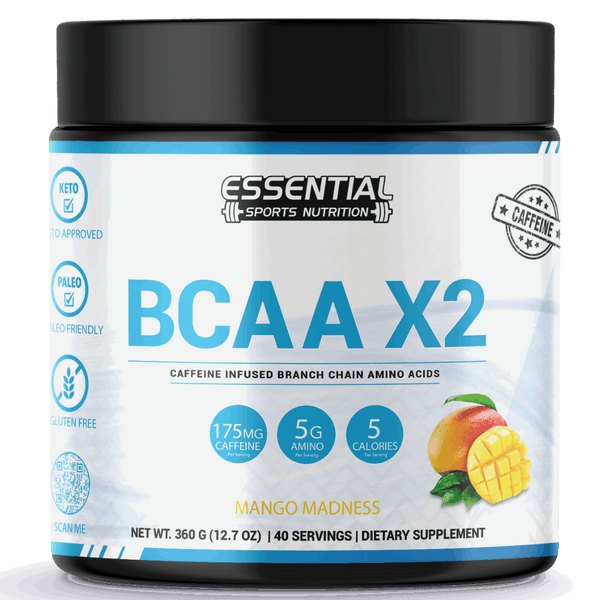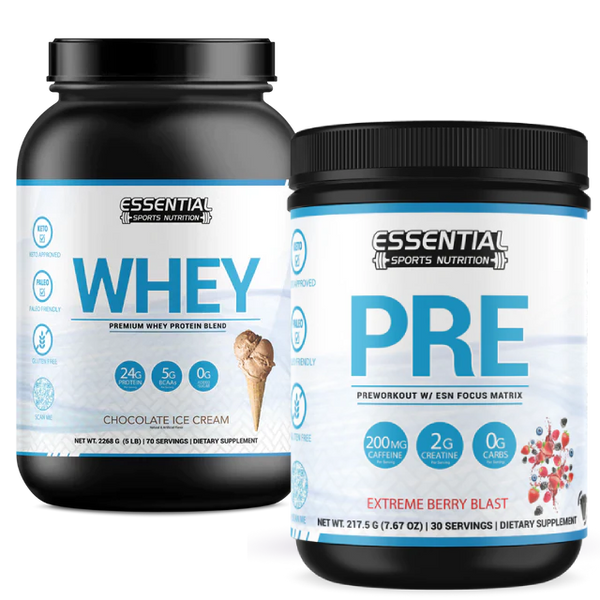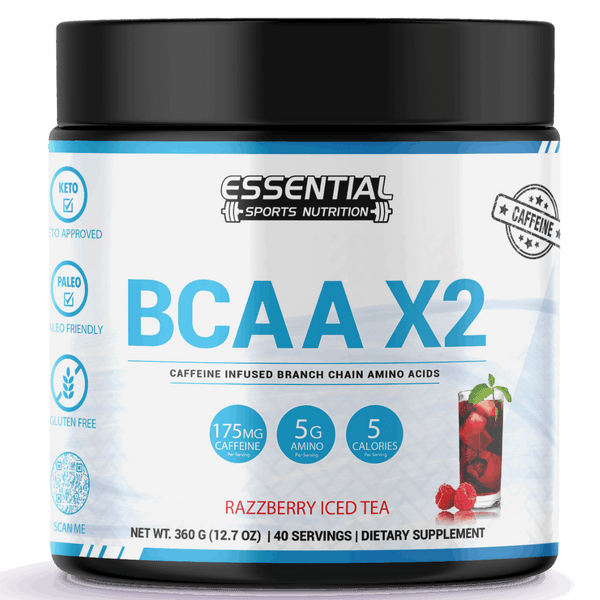Vertical Diet Veggie Vault: Supercharged Vegetables to Boost Your Nutrition
Incorporating low-gas, nutrient-dense vegetables like spinach, carrots, and bell peppers into your Vertical Diet plan is essential for excellent digestive health and performance. Spinach offers vitamins A, C, and K along with magnesium, supporting muscle function and immunity. Carrots provide beta-carotene and fiber, enhancing vision and cardiovascular health. Bell peppers are rich in antioxidants and vitamin C, boosting your immune system. Opt for low-FODMAP vegetables to reduce bloating and promote efficient nutrient absorption. When you include these vegetables, you support your digestive comfort and overall well-being. Keep going; there's more to uncover about this nutrient-focused approach.

Key Takeaways
Choose low-gas vegetables like spinach, carrots, and bell peppers to minimize bloating and enhance digestion.
Incorporate nutrient-dense options such as spinach and carrots for essential vitamins and minerals.
Cooked vegetables, like sweet potatoes, improve nutrient absorption and digestive comfort.
Opt for colorful vegetables to ensure a broad nutrient profile and support gut health.
Include low-FODMAP vegetables to promote optimal nutrient intake and digestive ease.
Importance of Vegetables
Vegetables are packed with essential vitamins, minerals, and antioxidants that are important for maintaining your overall health. Including a variety of vegetables in your diet helps prevent nutrient deficiencies and ensures you're getting a diverse range of nutrients. For instance, leafy greens like spinach and kale are rich in vitamins A, C, and K, while bell peppers are excellent sources of antioxidants that combat oxidative stress.
Fiber is another essential component found abundantly in vegetables. It promotes good digestion and supports gut health by feeding beneficial bacteria in your digestive system. This, in turn, helps improve nutrient absorption and can prevent issues like constipation. A healthy gut is vital for overall well-being and can even influence your mood and energy levels.
A vegetable-rich diet can greatly reduce the risk of chronic diseases such as heart disease, diabetes, and certain cancers. The antioxidants and other phytochemicals present in vegetables help lower inflammation in your body, supporting a strong immune system. Incorporating a wide range of colorful vegetables into your meals can bolster your health and protect against various ailments, ensuring you physically and mentally thrive.
Low Gas Vegetables

To support your digestive health while following the Vertical Diet, incorporating low-gas vegetables like spinach, carrots, and cooked options can minimize bloating and discomfort. These nutrient-rich, low-FODMAP choices are easier to digest, helping you absorb essential nutrients more efficiently. Focusing on these digestive-friendly greens allows you to maintain gut health and enjoy a more comfortable eating experience.
Digestive-Friendly Green Choices
Incorporating low-gas vegetables like spinach, zucchini, and bell peppers into your diet can greatly enhance your digestive health and minimize discomfort. These vegetables are particularly digestive-friendly because they are less likely to cause gastrointestinal discomfort compared to high-FODMAP foods. This means you're less likely to experience bloating or gas, improving your overall digestive health.
Spinach, zucchini, and bell peppers are gentle on the digestive system and packed with essential nutrients. For instance, spinach is rich in iron and magnesium, which are essential for maintaining energy levels and muscle function. Zucchini provides a good amount of vitamins C and A, supporting your immune system and eye health. Bell peppers are high in antioxidants and vitamin C, which help combat oxidative stress and boost your immune function.
Minimize Bloating Effects
Frequently choosing low-gas vegetables like spinach, carrots, and cooked options can greatly reduce bloating effects and enhance digestive comfort. These vegetables are particularly beneficial for maintaining peak digestion and reducing gastrointestinal distress, making them an excellent choice for athletes and bodybuilders who need to perform at their best. By incorporating low-gas vegetables into your diet, you can ensure that your digestive system remains gentle on the stomach and capable of efficient nutrient absorption.
| Low Gas Vegetables | Benefits |
|---|---|
| Spinach | Reduces bloating, rich in iron |
| Carrots | Gentle on stomach, high in fiber |
| Zucchini | Easy to digest, low FODMAP |
| Cooked Vegetables | Minimize bloating effects |
Consuming these low-gas vegetables helps minimize bloating effects by avoiding the high FODMAP content found in other vegetables. This approach supports top-notch digestion and reduces the chances of gastrointestinal distress, which is essential for those who require consistent energy and performance. Including various vegetables in your meals enhances your digestive comfort and ensures you get a broad spectrum of essential nutrients, ultimately contributing to your overall well-being and performance.
Nutrient-Rich Low FODMAPs
Low-FODMAP vegetables like spinach, carrots, and cooked options are essential in the Vertical Diet because they minimize bloating and enhance nutrient absorption. These vegetables are nutrient-rich and gentle on your digestive system, promoting gut health and reducing gas production. Including them in your diet helps maintain a balanced diet while supporting peak digestion.
When focusing on low-FODMAP foods, you're looking for foods that are less likely to cause bloating and gastrointestinal discomfort. This is particularly important in the Vertical Diet, which aims to maximize nutrient absorption and overall gut health. Here's why these vegetables are beneficial:
Spinach: Packed with vitamins A, C, and K, as well as folate and iron, spinach supports a healthy immune system and energy levels.
Carrots: High in beta-carotene, fiber, and antioxidants, carrots contribute to good vision and cardiovascular health.
Cooked Vegetables: Cooking reduces the FODMAP content, making vegetables like zucchini and green beans easier to digest.
Variety: Consuming a range of low FODMAP vegetables ensures you get a broad spectrum of nutrients without the associated gas production.
Nutrient-Dense Choices

Eating nutrient-dense foods like spinach, kale, and broccoli on the Vertical Diet guarantees you the essential vitamins and minerals needed for overall health. These nutrient-rich vegetables are packed with crucial nutrients like iron, calcium, and vitamin K. Including colorful vegetables such as bell peppers, carrots, and tomatoes ensures a wide range of vitamins, minerals, and antioxidants, promoting a well-rounded diet.
Choose low-gas vegetables like zucchini, cucumbers, and squash to minimize digestive discomfort. These veggies are less likely to cause bloating and are easier on your digestive system. Incorporating cooked vegetables, such as sweet potatoes, carrots, and green beans, can also enhance nutrient absorption and make digestion smoother. Cooking helps break down fiber, making these vegetables easier to digest.
Avoid high-FODMAP vegetables like onions, garlic, and cauliflower, as they can lead to gastrointestinal issues, which are counterproductive to the goals of the Vertical Diet. By carefully selecting and preparing your vegetables, you can promote an optimal nutrient intake without compromising digestive comfort. This balanced approach supports your overall health and aligns with the principles of the Vertical Diet.
Cooking Methods to Maximize Nutrients

When preparing vegetables on the Vertical Diet, steaming or sautéing can help you maintain more nutrients than boiling or frying. These healthier cooking methods guarantee that your vegetables remain nutrient-dense and flavorful.
Steaming is particularly effective at preserving water-soluble vitamins like vitamin C and B vitamins. By cooking your vegetables gently, you avoid leaching these essential nutrients into the water, as often happens with boiling. Sautéing, on the other hand, can enhance the absorption of fat-soluble vitamins like A, D, E, and K, especially when you use a small amount of healthy fat.
Consider these tips to maximize nutrient retention:
Steaming: Use minimal water and check for doneness frequently to avoid overcooking.
Sautéing: Opt for healthy oils like olive oil and keep the cooking time short to preserve texture and nutrients.
Avoid boiling: This method can cause significant nutrient loss, particularly for water-soluble vitamins.
Limit frying: High temperatures can degrade nutrients and add unnecessary fats to your meal.
Gut Health Benefits

Incorporating nutrient-rich vegetables like spinach and carrots into the Vertical Diet can greatly enhance your gut health by providing essential prebiotics and fiber. These vegetables support a diverse microbiome, enhancing digestion and nutrient absorption. By focusing on easily digestible, low-gas options, you can reduce bloating and gastrointestinal discomfort, promoting a healthier gut environment.
Nutrient-Rich Powerhouses
Eating nutrient-rich vegetables like spinach and carrots, as recommended in the Vertical Diet, supports gut health by providing essential vitamins, minerals, and antioxidants. These vegetables are not just simple additions to your meals; they're nutrient powerhouses that play an important role in maintaining a healthy digestive system. Incorporating a variety of colorful vegetables helps promote a diverse gut microbiome, which is essential for the best digestion and overall gut health.
By focusing on low-gas vegetables, the Vertical Diet aims to reduce bloating and gastrointestinal distress, making it easier for you to enjoy your meals without discomfort. Including a range of vegetables in your diet ensures a good intake of prebiotics, which are important for maintaining a balanced gut microbiome and supporting digestive health.
Here's why these vegetables are essential:
Spinach: Rich in vitamins A, C, and K, and packed with magnesium, which supports muscle function and gut motility.
Carrots: Loaded with beta-carotene and fiber, promoting healthy digestion and a strong immune system.
Cooked vegetables: Easier to digest, reducing the risk of bloating and enhancing nutrient absorption.
Prebiotics: Found in many vegetables, they help feed beneficial gut bacteria, fostering a balanced microbiome.
Fiber for Digestion
A diet rich in fiber from vegetables like spinach and cooked greens can greatly enhance your digestion and overall gut health. Fiber is essential for regulating bowel movements, preventing constipation, and supporting a healthy digestive system. It acts as a natural bulking agent, making it easier for your body to pass waste efficiently.
Including fiber-rich vegetables in your Vertical Diet not only aids digestion but also provides essential prebiotics. Prebiotics are compounds in food that nourish beneficial gut bacteria, which are vital for maintaining gut health. Consuming these vegetables fosters a positive environment for your microbiome, which can improve nutrient absorption and bolster your immune system.
Opting for low-gas vegetables can help you avoid the discomfort of bloating and gastrointestinal issues. Vegetables like spinach and cooked greens are excellent choices, as they are less likely to produce gas compared to other high-fiber foods.
Ultimately, prioritizing fiber in your diet can help you maintain a healthy weight, reduce inflammation, and ensure your body efficiently absorbs the nutrients you consume. This client-centered approach makes your journey on the Vertical Diet smoother and more effective.
Microbiome Diversity Boost
Expanding your vegetable intake in the Vertical Diet boosts fiber digestion and enhances microbiome diversity, promoting gut health. A diverse microbiome is essential for maintaining gut flora balance and ideal digestive function. Including various vegetables, especially those rich in prebiotics, can greatly support this goal.
Prebiotics are non-digestible fibers that feed beneficial gut bacteria. Vegetables like onions, garlic, leeks, and asparagus are excellent sources. These prebiotics help your gut bacteria thrive, contributing to a balanced and healthy microbiome.
Different colored vegetables offer unique phytonutrients, which are essential for overall well-being and gut health. Consuming a wide array of vegetables provides your gut bacteria with essential fiber and nutrients, helping them flourish.
Prebiotics: Foods like onions, garlic, leeks, and asparagus fuel beneficial gut bacteria.
Essential Fiber: Diverse vegetables supply the fiber necessary for gut bacteria to thrive.
Phytonutrients: Different colored vegetables offer unique benefits, enhancing gut health.
Gut Flora Balance: A varied diet promotes a balanced and healthy microbiome.
Incorporating a broad range of vegetables into the Vertical Diet is key to boosting microbiome diversity and supporting better digestive function and overall health.
Performance Enhancement

Incorporating nutrient-dense, low-gas vegetables like spinach and carrots into the Vertical Diet can greatly boost your performance by enhancing digestion and reducing bloating. These vegetables are specifically chosen for their ease of digestion and minimal gas-producing properties. Focusing on low gas vegetables can improve gut health, which is essential for peak nutrient absorption and overall well-being.
High FODMAP vegetables often cause gastrointestinal distress, which can hinder your performance. By reducing or eliminating these high FODMAP options, you'll experience less bloating and discomfort, enabling you to train harder and recover faster. Nutrient density is a key factor in performance enhancement, and vegetables like spinach and carrots are packed with essential vitamins and minerals that support your body's needs during intense physical activity.
Including various colorful vegetables in your diet makes your meals more visually appealing and ensures a broader nutrient profile. Each color typically represents different phytonutrients, which can further aid in recovery and overall health. By carefully selecting your vegetables, you fuel your body and optimize your performance and recovery.
Conclusion

With the Vertical Diet and its vegetable focus, you've got the keys to unleashing your peak performance. Choosing low-gas, nutrient-dense veggies and employing smart cooking methods will fuel your body efficiently without the bloat. Think of your gut health as the foundation of a skyscraper—strong and resilient. Prioritizing these vegetables isn't just a diet; it's a blueprint for enhanced performance and well-being. Your body will thank you every step of the way.
What to Eat on the Vertical Diet FAQs
Q: What is the Vertical Diet?
A: The Vertical Diet is a nutrition plan developed by Stan Efferding that prioritizes nutrient-dense foods and focuses on vertical diet macronutrients.
Q: What foods can I eat on the Vertical Diet?
A: The Vertical Diet emphasizes high-quality foods such as white rice, potatoes, eggs, and red meat consumption.
Q: What are the foods to avoid in the vertical diet?
A: Foods to avoid on the Vertical Diet include high-fodmap foods and those that are difficult to digest.
Q: Is there a specific meal plan for the Vertical Diet?
A: The Vertical Diet has a recommended meal plan outlining what foods to eat and when to eat them for optimal results.
Q: How does going on the Vertical Diet benefit me?
A: The vertical Diet can help you lose weight, build muscle, improve athletic performance, and focus on nutrient-dense foods that are easy to digest.
Q: Why is it called the Vertical Diet?
A: The diet is called the Vertical Diet because it focuses on "vertical" aspects such as nutrient density, micronutrients, and specific food groups to prioritize for optimal health and performance.
Q: What nutrients does the Vertical Diet prioritize?
A: The Vertical Diet prioritizes essential macronutrients and micronutrients to support overall health, muscle growth, and energy levels.
What Vegetables Can You Eat on the Vertical Diet?
Vegetables like spinach and carrots can be eaten and cooked on the Vertical Diet. These choices are low in gas and easy to digest, providing essential vitamins and minerals without causing bloating or GI distress.
Q: Can You Eat Potatoes on the Vertical Diet?
A: Potatoes have a high glycemic index, so avoid them on the Vertical Diet. Instead, opt for nutrient-dense, lower glycemic index vegetables like cooked carrots. This aligns better with the diet's goals of enhancing metabolism and digestion.
Q: Can You Eat Eggs on a Vertical Diet?
A: Yes, you can eat eggs on the Vertical Diet. They provide high-quality protein and essential amino acids and are easily digestible. Including eggs supports muscle repair, growth, and satiety, making them a versatile and nutritious addition to your meals.
Q: Is Avocado on the Vertical Diet?
A: No, avocado's not on the Vertical Diet. It's nutrient-dense but high in monounsaturated fats, which don't align with the diet's focus. The Vertical Diet prioritizes easily digestible foods like red meat and white rice for peak performance




























